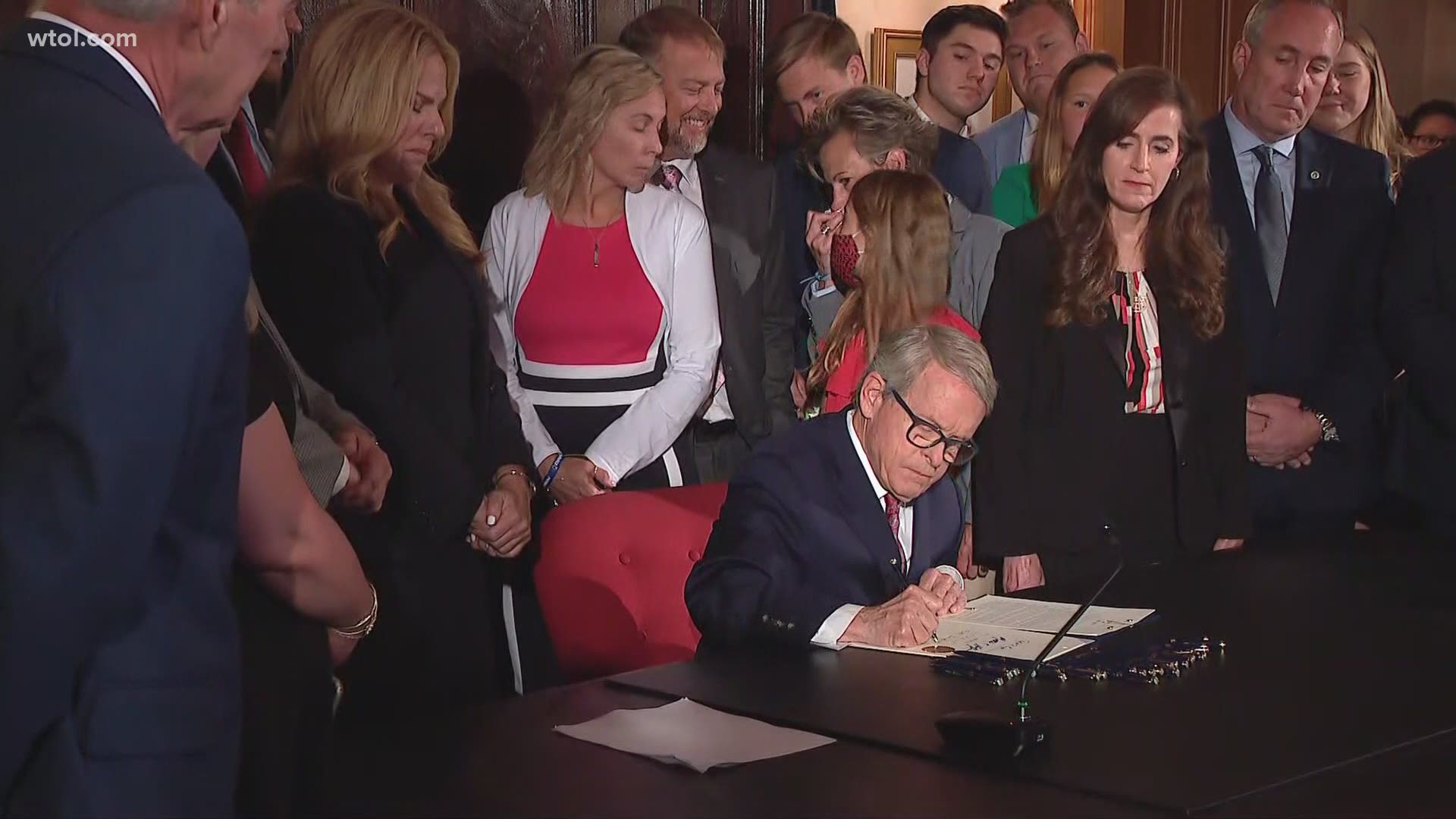COLUMBUS, Ohio — Ohio Gov. Mike DeWine signed legislation Monday giving county commissioners new powers to kill wind or solar projects early in their development.
No such power exists for local officials for coal mines or oil and gas wells, which are regulated at the state level.
If commissioners opt against scuttling a project entirely, Senate Bill 52 also allows them to block wind and solar developments in all or part of unincorporated areas in the county. However, citizens would have the right to canvass signatures and put the restricted development area resolution up for a popular vote.
It also gives locals two votes on projects within their jurisdiction atop the seven preexisting votes among Power Siting Board members.
The legislation passed the Ohio Senate 21-12 and the House 52-43. The bill drew only Republican support, though several in both chambers voted with Democrats in opposition.
Proponents of the legislation said it gave locals more of a voice over undesirable developments in their towns. They said the Power Siting Board tends to overlook local opposition before voting to approve projects.
“It only makes sense that everyone affected by the industrial wind and solar projects should have a voice by vote,” said Brett Meyers, of Seneca County, in written testimony to lawmakers. “A local vote is the only true fair way since large scale wind and solar projects transform our beautiful rural communities in such sweeping fashion.”
The Fremont News-Messenger reported last month the OPSB, under heavy pressure from locals as SB 52 inched toward passage, rejected a proposal to build a farm of 50 windmills in Seneca and parts of Sandusky counties.
The bill’s sponsors, state Sens. Bill Reineke, R-Tiffin, and Rob McColley, R-Napoleon, along with companion bill sponsors in the House, state Reps. Craig Riedel, R-Defiance and Dick Stein, R-Norwalk, issued a statement after the bill passed claiming it will “promote partnership and collaboration between project developers and the local community.”
“[The bill] is about ensuring that Ohioans have the freedom to pursue and protect their quality of life by having the ability to decide for themselves whether industrial sized wind or solar projects are a good fit for them,” they said in a statement.
Critics said the legislation is another handout to the fossil fuel energy industry and will chill perspective clean energy development in Ohio.
Several Democrats drew connections between it and House Bill 6 in 2019, which bailed out coal and nuclear plants on Ohio ratepayers’ dime while also gutting the state’s clean energy laws. The legislation is at the center of a prosecution that has led to an indictment of the former House Speaker (he pleaded not guilty and awaits trial) and guilty pleas of his political adviser and an energy lobbyist involved in an alleged bribery scheme.
Mike Volpe, vice president of Open Road Renewables, which develops solar farms around the U.S., characterized the legislation as attempt to “sabotage” the renewables industry in Ohio by singling it out for unfair regulatory treatment.
“It adds an unprecedented and potentially arbitrary ‘kill switch’ to the end of a balanced and rigorous review process,” he said in written testimony to lawmakers. “Solar’s modest impacts are mitigated through the long, expensive and arduous OPSB regulatory process.”
Andrew Gohn, a lobbyist with the American Clean Power Association, made his opposition simple: there’s no reason to subject some forms of energy to “overlapping” state and local regulation while some forms of energy need not bother.
“This regulatory burden — unique to only renewables — is likely to make development in Ohio more difficult than any other state,” he said in written testimony to lawmakers. “When local control is layered on top of state regulatory processes for wind and solar while other energy technologies are protected from local input, the result is government picking winners and losers by putting their thumb on the scale against renewable energy.”
DeWine signed the legislation less than two weeks after signing legislation that expressly forbids local governments from banning natural gas hookups on new buildings.
A DeWine spokesman, when asked about the separate regulatory treatment under the bill of renewables compared to fossil fuels, said “this issue differs from those other examples due to the volume of permits and size of the projects generally being sought in permitting.”
Passage of the bill comes as average global temperatures continue to rise and American cities face down the practical realities of climate change. For instance, the American West is experiencing a “megadrought” that experts say is a direct consequence of rising global temperatures, according to an ABC News report. Firefighters in California, according to the Associated Press, are struggling to contain a large wildfire as the temperatures hit record highs.
Currently, 23 solar and one wind project are listed as pending review by the OPSB (wind development has been largely stagnant in Ohio after a 2014 law tripled the distance that wind turbines must be set back from property lines).
The new bill will not apply to solar projects that have already met application requirements with the PJM Interconnection, which controls the flow of wholesale electricity sales across regional states.

